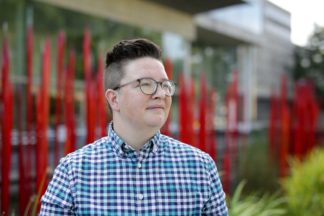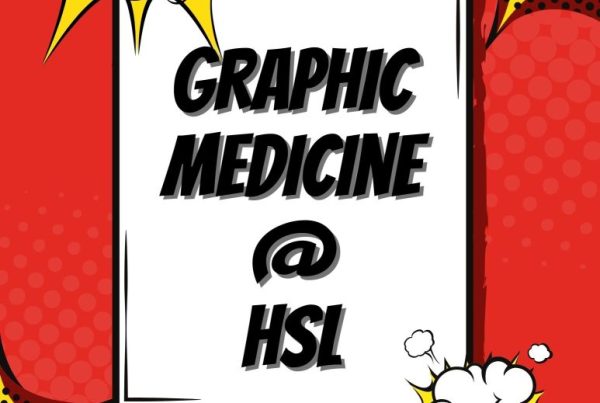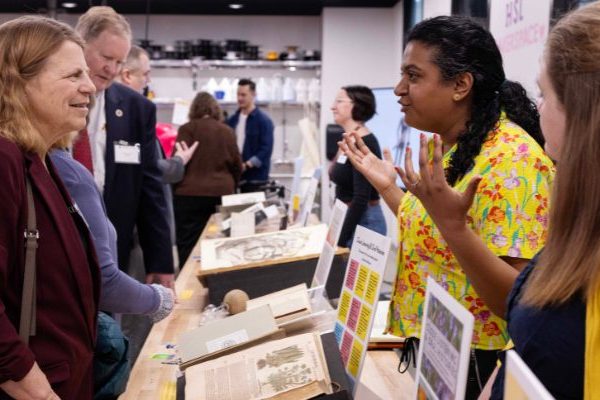The second phase of the University Libraries’ Transgender Oral History Project has begun. Led by Myrl Beam, the project will feature interviews that highlight transgender social movements and organizing.
Beam, Oral Historian for the project — housed in the Libraries’ Tretter Collection — will build on the work of Andrea Jenkins, who interviewed almost 200 trans and gender non-conforming people as they narrated their life stories.
Beam is currently on a two-year scholarly leave from his role as an Assistant Professor of Gender, Sexuality, and Women’s Studies at Virginia Commonwealth University.
We spoke with Beam about the importance of this project.
Can you tell us about your research background?
Beam: I actually did my Ph.D. here at the University of Minnesota in the American Studies department and I finished in 2014. My research area and area of expertise is queer and trans movements in the U.S. In particular, the way that queer and trans movements have changed over the last 40 years as they have become more and more institutionalized.
I wrote a book that came out in 2018 called Gay, Inc.: The Nonprofitization of Queer Politics. It looked at organizations — two of them here and two of them in Chicago — and tried to tell a story about queer and trans movements. How did movements that were so focused on transforming norms around gender and sexuality become invested in things like marriage and the military, which 40 years ago would have been inconceivable? What happened to make the movement shift its politics so intensely?
I looked at how movements became institutionalized in the nonprofit form and how the pressures of funding pushed queer organizations towards more conservative politics. It’s very difficult to convince very wealthy people to give you money to change the system that made them wealthy.
And what does your research show about transgender social movements in particular?
Beam: Trans movements have, by and large, been left outside of that push, though not entirely. Trans organizations tend to be more grassroots, more low budget, and tend to be really connected with people who are experiencing the things that the organization cares about: whether it’s police violence, housing instability, or immigration targeting.
One of the things that we see happening, though, is that a lot of funders and organizations have turned their attention towards trans inclusion. That is having a noticeable effect on trans movements. So that’s one of the things that this project lets us investigate: How trans movements are weathering those transformations.
What made you want to be part of the Tretter Trans Oral History Project?
I’m excited about the opportunity to travel around the country talking with activists and organizers in all corners of trans movements for justice. I’m also really interested in getting at what I call world-making practices of trans movements. Trans movements aren’t just about rights. They’re not just about “equality,” whatever that means.
They’re really about imagining a world that is not structured by racialized ideas of gender normativity at a foundational level. Our current reality is very much structured around gender differentiation and those gender norms are incredibly racialized. What would a world not structured by that look like? What could a more egalitarian, more capacious, more livable world look like?
I think trans movements, especially movements of transfeminine folks of color, are really doing that work of imagining. I’m excited to have those conversations — to talk about how people are creating pockets of that future world in the present through social movement organizing. I think it’s incredibly rich. Already, the oral history project is an incredibly rich repository of life stories.
What makes the Transgender Oral History project so important for the archive?
Beam: There’s very little archival record of trans people telling their own stories of navigating the world.
It’s not exactly that trans folks and trans histories are left out of the archive. But the way that gender nonconformity is represented in the archive is primarily through the written records of big, powerful institutions that police gender. So, the medical system, psychiatric institutions, policing, prisons, law to some extent — all of these big institutions that produce and police ideas of gender normativity. Trans folks are represented as either sick or criminal, either pathologized or deviant or dangerous. That’s primarily the archival record of gender nonconformity.
One of the fantastic resources of the oral history project is just hearing trans folks talk about gender nonconformity from the perspective of being gender expansive, being trans, and what the world looks like. It’s not just their stories of being policed and oppressed, but also the stories of resilience and the stories of living differently. The richness of the oral history project is that it gives this much richer and more exciting picture.
What is the work you’re doing for the second phase of the project?
Beam: We will conduct about 100 interviews, transcribe them, and make them digitally accessible. In general, the second phase will be less life stories and more about activism and movement work.
It’s a new cohort of folks for the most part. There are five or six people, probably, who I want to follow up with and ask more targeted questions about their activist work.
We’re working to make the transcripts connected with the video, so that someone could search in the transcript, find the thing that they’re looking for, and go directly to that spot in the video, because it’s timestamped. It makes a big archive of oral histories more usable to the researcher.
At the end of this project there’s going to be this incredibly rich repository for researchers, for students, for activists, and community members that just doesn’t exist anywhere else. There’s a ton of really fantastic trans oral history projects happening right now in the U.S. and Canada, but the Tretter Project has this breadth and scope that is just an incredible resource.
How can students, researchers, and community members learn more?
Beam: I’m excited about all the different ways that folks can engage with it. We’re thinking about creating some teaching guides that would pair particular clips or segments with some ideas for further reading and discussion questions that might be useful in a high school environment.
We’re going to create some digital exhibits. We’re not sure whether that looks like video shorts or like podcasts, but we’re looking at ways to make the oral histories interactive and engaging for a broad audience. Those are the concrete goals of the project.
What’s next for you once this phase of the project is done?
I’m excited to do some writing about oral history practice and trans history. And then I’m excited to work on a longer book project about trans social movements.





